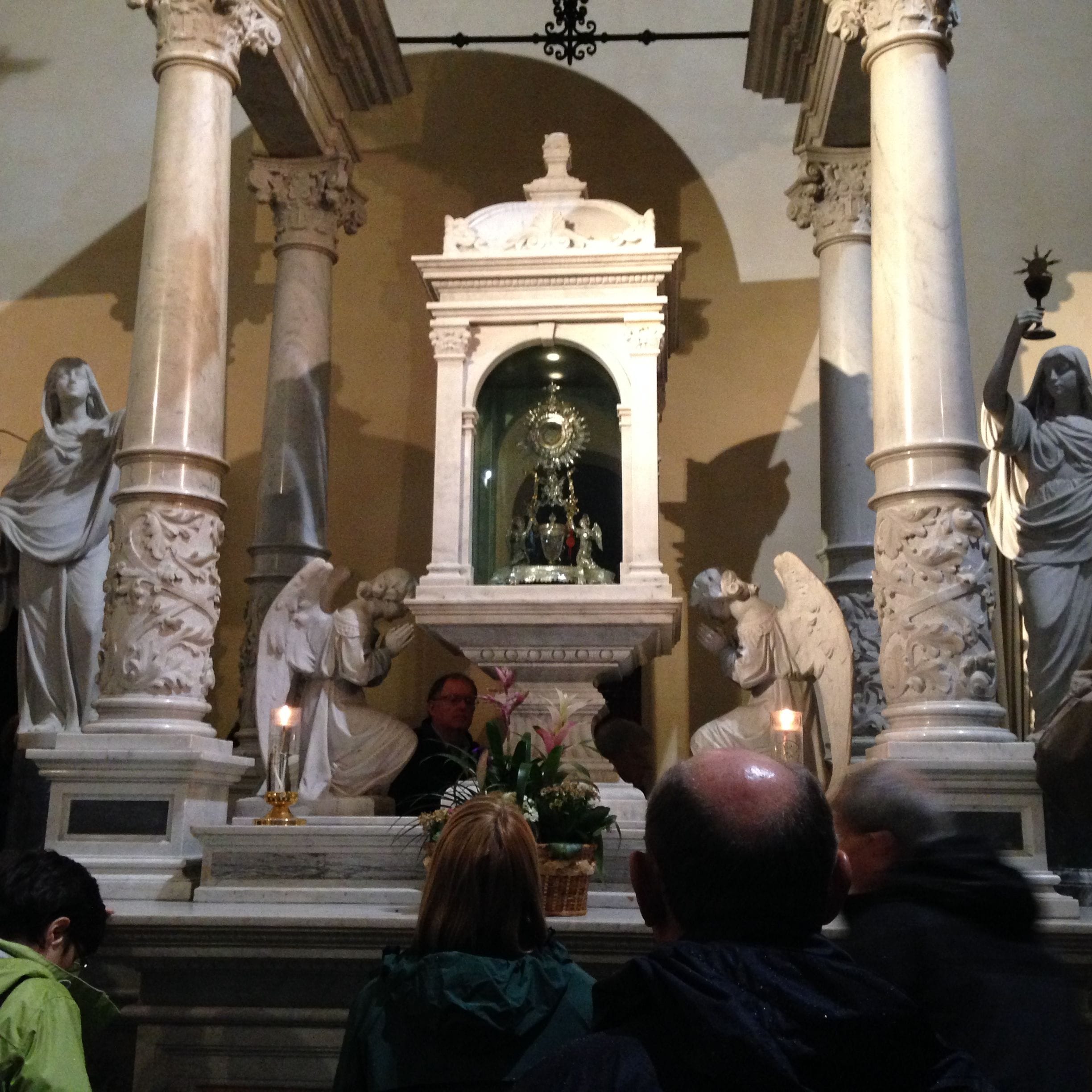The Miracle of Lanciano, an 8th-century event in a small Italian town, recounts the extraordinary transformation of bread and wine into human flesh and blood during Holy Communion. This event has captivated believers and intrigued skeptics for over a millennium, sparking ongoing debate where faith intersects with science.
A Moment of Transformation: The Story Unfolds
In the 8th century, within the quiet walls of a church in Lanciano, Italy, a Basilian monk found himself wrestling with doubts about the Real Presence—the Catholic doctrine that during Communion, the bread and wine truly transform into the body and blood of Christ. As he celebrated Mass, his skepticism weighed heavily on him. Then, as he uttered the words of consecration, something extraordinary is said to have occurred. The bread in his hands, according to the story, turned into visible flesh, and the wine transformed into blood. This moment, forever etched in religious history, birthed the legend of the Miracle of Lanciano.
Examining the Evidence: A Historical Perspective
The story of the miracle, while likely circulating orally soon after the purported event, wasn’t formally documented until centuries later. The earliest written accounts appear in 1574, leaving a significant gap in the historical record. This absence of contemporary documentation presents challenges for historians seeking to verify the details of the 8th-century event. Some historians suggest the possibility of embellishment or alteration of the story over time, a phenomenon not uncommon with narratives passed down through generations, especially those associated with religious beliefs. Despite this historical ambiguity, the enduring power of the Lanciano narrative speaks to its profound impact on faith and belief.
Scientific Inquiry: Peering into the Relics
The remnants of this reported miracle—a fragment of what appears to be heart tissue and five solidified globules of blood—have been meticulously preserved within the Church of San Francesco in Lanciano. In the 20th century, these relics underwent rigorous scientific scrutiny. One of the most notable investigations, led by Dr. Odoardo Linoli in 1970-71 and again in 1981, produced intriguing results. Linoli’s analysis suggested that the tissue was indeed human myocardial tissue, the muscle found in the heart. Furthermore, the blood was identified as human blood, type AB, a relatively rare blood type that some believe also matches the blood type found on the Shroud of Turin, a famed relic believed by some to be the burial cloth of Jesus. Linoli’s team reported finding no traces of preservatives or embalming agents. The proteins found in both the flesh and blood were deemed consistent with normal human tissue. However, it’s important to acknowledge that scientific understanding evolves, and future studies might offer new interpretations of these findings.
The Intersection of Faith and Science: A Continuing Conversation
The Miracle of Lanciano continues to evoke wonder and inspire pilgrimage for millions of Catholics. It stands as a powerful testament to their belief in the Real Presence of Christ in the Eucharist. The event offers a tangible link to their faith, providing comfort and strengthening spiritual conviction. However, for skeptics, the absence of early historical documentation and the possibility of later embellishments raise questions. Although the Church recognizes the event as a miracle, some call for further research and independent verification. The ongoing conversation surrounding Lanciano reflects the complex interplay between faith, science, and history, reminding us that some questions may never be fully answered.
Unraveling the Mystery: Lingering Questions and Future Research
While scientific analyses have offered intriguing insights into the physical nature of the relics, questions linger about the mechanisms that might have led to the purported transformation. How could bread and wine become human tissue and blood? Why hasn’t there been decay over the centuries? How can we account for the centuries-long gap in written records about the Miracle? While some view these unanswered questions as reinforcing the mystery and potential for a divine explanation, others suggest that future research might reveal alternative explanations, perhaps involving natural processes or human interventions not yet fully understood. The Miracle of Lanciano continues to invite both scientific curiosity and spiritual reflection, emphasizing that even in the face of uncertainty, the human pursuit of understanding perseveres.
Uncover the captivating tale of the legendary conquistador Francisco Pizarro’s relentless pursuit of riches in Pizarro’s Gold. Journey through the enchanting world of cats in ancient Egypt and discover the secrets they hold in the enthralling Renpet Stories.
- Unlock Elemental 2 Secrets: Actionable Insights Now - April 2, 2025
- Lot’s Wife’s Name: Unveiling the Mystery of Sodom’s Fall - April 2, 2025
- Photocell Sensors: A Complete Guide for Selection and Implementation - April 2, 2025
















